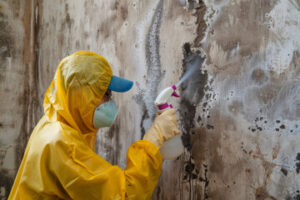What It Really Means to Work as a Plumber
Plumbers Sarasota repair, install, and maintain the pipes and fixtures that facilitate water, gas, and waste disposal in homes and businesses. They also work in construction environments and collaborate with architects and builders to ensure plumbing infrastructure is integrated seamlessly into building projects.

The plumber stereotype is a guy in a sweaty t-shirt wielding a plunger, but they actually do much more. This is an important and highly skilled profession that contributes to public health and safety.
Essentially, plumbers work on pipes that supply water and gas to homes, as well as carry waste away. They install and repair domestic appliances associated with these systems, including toilets, faucets, sinks, and more. Plumbers also perform inspection and maintenance services, such as drain cleaning and clog removal. They must be able to read and interpret blueprints, as they are responsible for installing plumbing systems in new construction and remodeling projects.
Depending on their area of expertise, plumbers may specialize in residential, commercial, or industrial plumbing. Residential plumbers typically focus on repairing and installing plumbing fixtures, such as kitchen and bathroom fixtures, bathtubs and showers, water heaters, and drainage systems in homes and apartments. Commercial plumbers, on the other hand, deal with large-scale plumbing installations and repairs for office buildings, retail stores, restaurants, and other commercial properties. Industrial plumbers are trained to work with specialized machinery and plumbing systems found in manufacturing plants, power stations, and other industrial settings.
Some plumbers may choose to become specialty plumbers, such as sewer or backflow prevention specialists, gas line installers, and green plumbers. These specializations require additional training and certifications. In addition to their general plumbing duties, these plumbers are responsible for ensuring that all plumbing work they complete complies with local and national safety standards.
A successful plumber must be able to work independently and solve problems quickly and efficiently. They must be able to read and understand blueprints, as well as possess excellent communication skills in order to explain complex plumbing issues to customers. Plumbers must also be physically strong and have the ability to lift heavy equipment.
Although plumbing can be a challenging career, it offers many benefits, including a good salary and job security. In addition, there are many opportunities for advancement within the field. Plumbers can choose to be self-employed or work for a private company. Self-employed plumbers typically have more flexibility and control over their schedules, as they are not bound by the same restrictions as employees of larger companies. However, they must be prepared for the demands of the job, which can include working long hours and dealing with a variety of emergency situations.
Education and Training Requirements
Plumbing is a highly technical trade, but most plumbers start their careers with just a high school diploma. They then enroll in vocational training programs at trade schools or community colleges. Many also participate in an apprenticeship program to get hands-on experience in the field. The length of an apprenticeship varies from two to five years. During this time, apprentices learn to install and repair various types of pipes and plumbing fixtures. They also become familiar with building codes and safety regulations.
Students in a plumbing program should work hard to stay focused and committed to their education. They should ask instructors questions to clarify any unclear points and try to complete assignments as quickly as possible. In addition, they should take advantage of any additional resources available to them, including online tutorials and webinars. These tools can help students advance through the program faster and be better prepared for their future jobs.
A plumber must have excellent problem-solving skills and be comfortable reading blueprints. They must also know how to use a variety of hand and power tools, as well as understand basic math concepts. It is important to keep up with new technologies used in the industry and be able to operate equipment such as hydraulic lifts, sewer machines, and power pumps. Plumbers are often exposed to dangerous chemicals and bacteria, so they must adhere to strict safety protocols.
Plumbers who are trained to repair and install hot water heaters, sewage systems, and kitchen appliances have a broad range of job opportunities. These positions are in demand, as homes and businesses need these services to function properly. In addition, plumbers who are skilled in the installation of gas and electrical systems can make even more money by working on heating, ventilation, and air conditioning (HVAC).
If you are interested in becoming a plumber, you should contact your local trade school to find out what courses are available. Some offer career diplomas, which can give you a leg up when looking for employment in the field. Others offer short-term training programs that prepare you for the workforce in as little as three months.
Work Environment
A plumber’s work environment can vary widely depending on the type of plumbing they do. For example, residential plumbers often work directly in people’s homes, which may involve working in tight and confined spaces such as crawl spaces and basements. This can be challenging, as plumbers must navigate around furniture and other fixtures to carry out their tasks. Plumbers also frequently interact with customers, explaining the issues with their plumbing systems and discussing repair options.
Commercial plumbers, on the other hand, typically work in larger buildings such as schools, offices, and factories. These systems are generally more complex than residential ones, and plumbers must be able to understand and work with large pipes and industrial-grade fixtures.
Some plumbers specialize in particular areas of plumbing, such as gas or sewer. This can be a great way to narrow down your job prospects and increase your earning potential. It’s also important to stay up-to-date on new plumbing technology and techniques, as this will ensure that you’re able to provide the best possible service to your customers.
Plumbers often face a variety of challenges in their day-to-day work, but they also experience a high level of satisfaction and rewards. The combination of good pay and a wide range of job responsibilities makes this an attractive career option for those interested in the field. In addition, plumbers are able to use their skills to make an impact on the lives of their customers, which can be extremely satisfying. While plumbing does present some challenges, it’s a great choice for those who enjoy hands-on work and problem-solving.
Salary
Depending on where they work and how long they’ve been in the trade, plumbers can earn between a minimum of $30,000 per year to upwards of $100,000 or more. Many plumbers also have the option to run their own contracting businesses, allowing them to set their own rates and increase their earnings.
Those who pursue careers as plumbers typically start their training by taking classes at a vocational school or technical college. They can then seek out a plumbing apprenticeship, where they’re paid to learn on the job. After a few years of apprenticeship, plumbers may be able to take the master plumber exam and become licensed. Plumbers can work for themselves or they can seek out positions at larger firms, where they’re likely to receive more traditional benefits like health insurance and retirement options.
Plumbers often work in both residential and commercial sectors. Aging buildings require routine maintenance, while new construction projects need plumbers to install systems. Some plumbers also specialize in specific areas, such as water filtration or sewer system installations. These niche markets offer higher salaries than general plumbing jobs.
Choosing a career path is an important decision for any person, especially when it comes to the financial security of one’s family. Although the salary for a plumber can vary, this is an excellent career choice for those who enjoy hands-on work and want to make good money.
In addition to the standard wages, plumbers can also expect bonuses and overtime pay from their employers. The pay for a plumber can also vary based on location, with some cities offering higher wages due to the cost of living and high demand for skilled workers. However, plumbers can expect their wages to rise over time as they gain experience and build up their skillsets.


